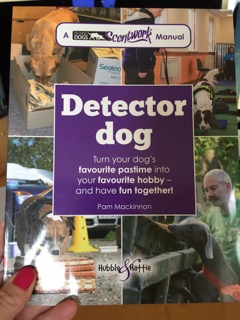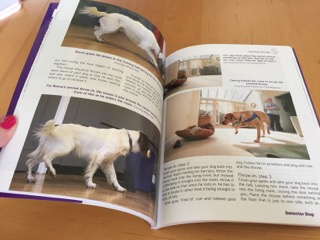
Registered Charity No 1084382
If you require help training your Dalmatian, please get in touch with us and we will direct you to a Positive Reward Trainer in your area, alternatively go to www.apdt.co.uk
TIPS AND POINTS TO REMEMBER WHEN TRAINING – Consistency, Patience, High grade treats to hand.
PARALLEL WALKING is great for getting a dog comfortable with the movement of another dog/people. It helps to keep the dog calm because dogs tend to be less explosive when moving versus holding still.
- Please make sure the dog’s remain on the lead, walking with a distance between them.
- Walking parallel (dog’s walking in the same direction) with each other, walk as above, praising your dog’s using a marker word such as “good “and rewarding with treats. (Only use food reward’s if both dogs are comfortable around food – no resource guarding issues).
- If the behaviour between both dogs is positive (no signs of fearful or threatening behaviour), you can slowly start to close the distance between both dogs so that eventually they are walking side by side.
- Next work on up-close greeting, still walking parallel close to each other, let both dogs sniff from up close for a second and say something like “let’s go”, move away, praise and reward.
- Repeat a couple of times and then call it a day. Always try to end on a positive note!!!
LOOSE LEAD WALKING – The aim is for our dog/puppy to walk nicely beside us on a loose lead and not pull.Decide which side you would like your dog/puppy to walk on (ideally both sides should be taught as this will be useful when walking along a roadside. (It’s safer for the dog on the inside)
Place your dog on the left hand side (reverse instructions if you wish your dog to walk on the right side).
Method 1
- Hold your lead in your right hand and treats ready in your left hand.
- Get your dog’s attention and lure him into position with a treat (standing beside you on the left hand side).
- Using the treat in your left hand, lure him forward a step or two and reward marking the behaviour with your marker word YES or GOOD. (making sure the lead remains loose) and repeat
- If you dog pulls forward after receiving the reward, stand still and wait till you get his attention again and lure back into position besides you.
- Once you have achieved two or three steps of loose lead walking, increase the distance between treats and build up until you have reached about 10 steps.
- Once we have reached about 10 steps we can introduce a signal word. You can use the words: – walk with me, stay close, walk close, walk nicely as your signal word.
Method 2
- Standing still, wait for your dog to stop pulling with no tension on the lead.
- Get his attention and reward when he’s beside you. Take a step forward (your dog will no doubt shoot out in front of you). If this happens stand still and wait for your dog to stop pulling again and get his attention.
- After a few repetitions your dog should come back to your side quicker.
- Once you can take a step without your dog shooting forward on the lead you can take 2 steps forwards. Repeat this until you have reached about 10 steps.
- When you can take about 10 steps without your dog pulling on the lead you can start to introduce the signal word.
DO NOT INTRODUCE THE SIGNAL WORD TO EARLY.
REMEMBER: – Stay calm and positive. Don’t yank your dog into position, be patient and wait. If you have a very hard puller, it may be helpful to use a head collar or harness to aid your training.
BENEFITS OF TEACHING SCENT WORK TO DOGS –“I WANT TO BUILD TRUST WITH MY WELFARE DOG AND TEACH HIM SOMETHING NEW
Scent work is a fun activity suitable for all dogs including dogs with limited physical movement. It helps to build trust and strength bonds which can be beneficial to rescue dogs.
Scent work can be done inside or out and can be adapted to the skills of both handler and dog.
Scent work can also be useful tool to reward recalls helping your dog pay attention to you rather than other dogs, help build up confidence around strangers, distract your dog from eating something while out walking such as horse poo.
Scent work is mentally tiring for your dog, so sessions should be no longer than a couple of minutes at a time.
Equipment needed scent work with toys – Catnip or sage, tin, favourite toy, cardboard boxes.
Equipment needed scent work with food – Branded supermarket cheese. (Cheese sticks to almost anything)
Be mindful of the safety of toys and scents you use.
 |
 |
Photos supplied with kind permission of TDS
For more information on scent work, please follow the link below.
CLICKER TRAINING AND WHY IT’S BENEFICIAL IN TRAINING YOUR DOG.
Clicker training is a kind, positive and fun way to teach your dog new behaviours
- A clicker is an effective way of training and works much better than using your voice.
- Clickers don’t influence your mood.
- Clicker are clear and consistent.
- Clickers mark a behaviour and reinforce correct behaviour by marking with one click.
- Clicker training can be taught at any age, any breed, sex or temperament.
Clickers are precise, and they mark even a tiny movement. Our dogs become accustomed to our voice and words we use so using a clicker speeds up learning
QUICK TIPS TO GET YOU STARTED – Teaching your dog the meaning of the clicker.
- A Clicker (can be purchased on line or at pet shops).
- Pea size treats such as hotdog sausage, chicken or cheese.
Step 1 –
With your dog by your side or in front of you, click once and immediately give then a treat. Repeat this a couple of times until your dog has started to look at you and wait for the sound.
Step 2 –
Target training is a useful and fun behaviour to teach dogs and can help with recall, loose lead walking, settling on a bed all of which are beneficial to teach your dog. With your hand presented as if presenting a treat, your dog will be inquisitive to see what’s in your hand. When your dog touches your hand, click and reward.
Well done, you have just performed your first Target and clicker training!
Now your dog has made the connection between a click and a treat you can gradually start to teach new behaviours.
Dog’s love rewards, so rewarding a behaviour you want, your dog is more likely to repeat the behaviour. (If you click, reward your dog even if you clicked at the wrong time).
Useful reading – Clicker Training for Dogs (Karen Pryor)
With step by step photographs
